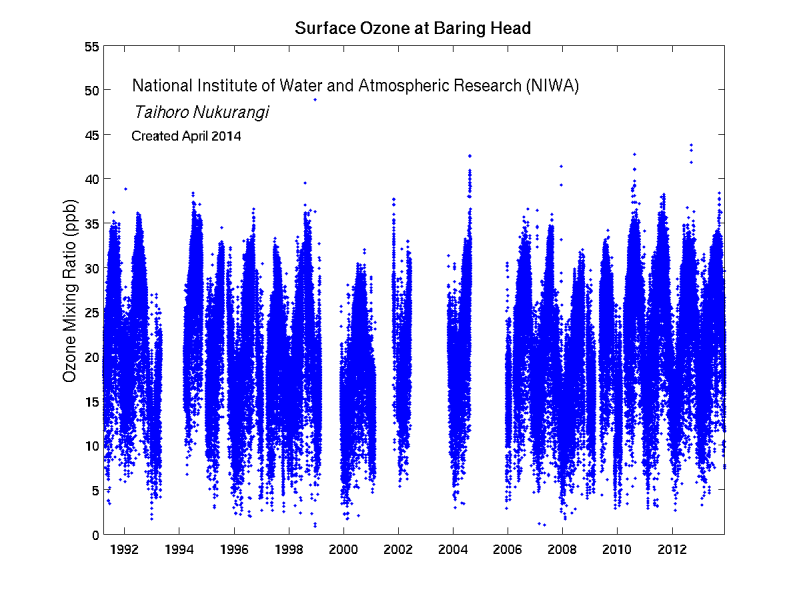There is a marked seasonal cycle in surface ozone (O3), with a maximum in winter and minimum in summer.
There can also be significant variability from day to day caused by synoptic scale meteorological variations. Strong winds are often associated with high ozone concentrations resulting from enhanced vertical exchange and mixing processes, which bring ozone from aloft down to a lower level. The greatest surface ozone variability occurs with northerly winds, as the air passes over the ground surface, which is an effective sink for ozone; the effectiveness of this sink diminishes with increasing windspeed. In contrast, southerly winds have a relatively narrow range of high ozone concentrations, as the air passes over the ocean, where the ozone destruction processes are very slow.
Surface ozone concentrations in units of 10–9 mole/mole (ppb) are shown for the period 1991 to 2017. Data points are hourly means of measurements during all wind conditions at Baring Head station.

